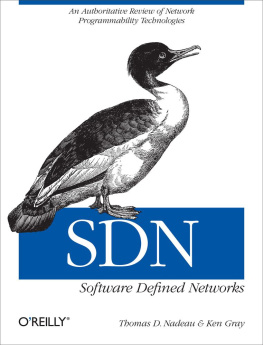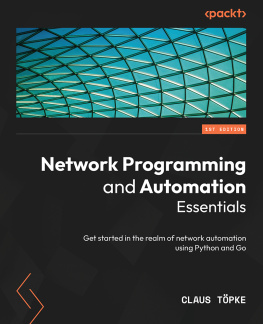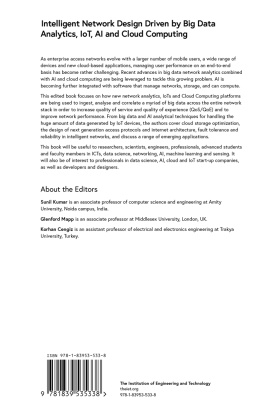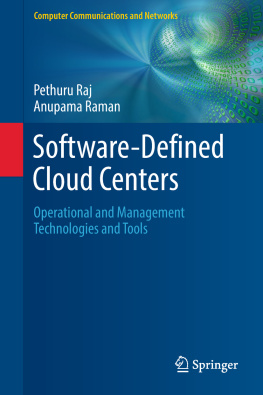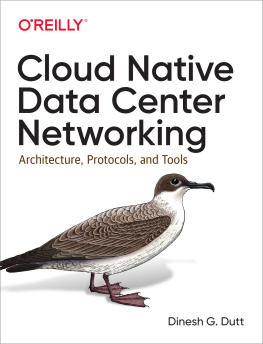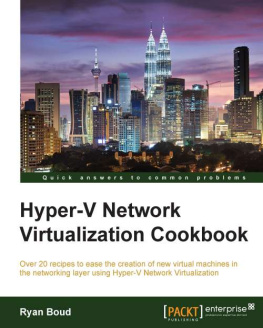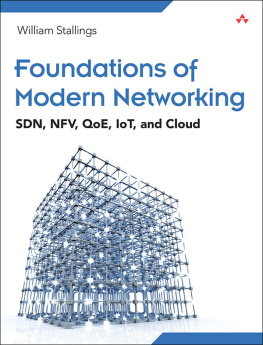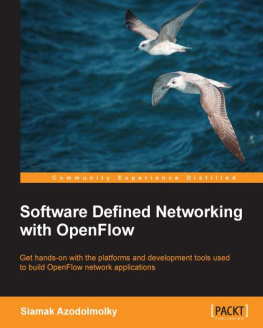SDN: Software Defined Networks
Thomas D. Nadeau
Ken Gray
Beijing Cambridge Farnham Kln Sebastopol Tokyo
Special Upgrade Offer
If you purchased this ebook directly from oreilly.com, you have the following benefits:
DRM-free ebooksuse your ebooks across devices without restrictions or limitations
Multiple formatsuse on your laptop, tablet, or phone
Lifetime access, with free updates
Dropbox syncingyour files, anywhere
If you purchased this ebook from another retailer, you can upgrade your ebook to take advantage of all these benefits for just $4.99. to access your ebook upgrade.
Please note that upgrade offers are not available from sample content.
A Note Regarding Supplemental Files
Supplemental files and examples for this book can be found at http://examples.oreilly.com/0636920027577/. Please use a standard desktop web browser to access these files, as they may not be accessible from all ereader devices.
All code files or examples referenced in the book will be available online. For physical books that ship with an accompanying disc, whenever possible, weve posted all CD/DVD content. Note that while we provide as much of the media content as we are able via free download, we are sometimes limited by licensing restrictions. Please direct any questions or concerns to .
Foreword by David Meyer
David Meyer
Although the ideas underlying software-defined networking (SDN) have only recently come into the public consciousness, a few of us who are active in the research, operator, and vendor communities immediately saw the applicability of SDN-like techniques to data center and service provider environments (and beyond). In addition to the explosion of innovative thinking going on in the research community, we also saw SDN as a programmatic way to optimize, monetize, and scale networks of all kinds.
In 2011, the first organization dedicated to the growth and success of SDN began with the Open Networking Foundation (ONF). Among its stated missions was to evolve the OpenFlow protocol from its academic roots to a commercially viable substrate for building networks and networking products. Within two years, the ONFs membership had grown to approximately 100 entities, representing the diverse interest and expectations for SDN. Against this backdrop, many of us were looking at the wider implications of the ideas underlying SDN, and in the process, generalized SDN to include not only OpenFlow but other forms of network programmability as well.
Early on in this process, both Tom Nadeau and Ken Gray realized that SDN was really about general network programmability and the associated interfaces, protocols, data models, and APIs. Using this insight, they helped to organize the SDN Birds of a Feather session at IETF 82, in Taipei, to investigate this more general SDN model. At that meeting, Tom presented a framework for software-defined networks that envisioned SDN as a generalized mechanism for network programmability. This work encouraged the community to take a more general view of SDN and eventually led to the formation of the Interface to the Routing System Working Group in the IETF.
Since that time, in addition to their many contributions to Internet technologies, Tom and Ken have become well-respected senior members of the SDN community. They are active participants in the core SDN industry activities and develop products for the SDN market. Some of the key industry activities that Tom and Ken drive include the ONF, IETF, ETSI, industry events such as SDN Summit 2012/2013, as well as open source consortia such as the Open Daylight Project. This book draws on their deep understanding and experience in the field and offers a unique perspective on SDN. It will help you understand not only the technology but also how it is being developed, standardized, and deployed.
Tom and Ken are eminently qualified to give you a lucid understanding of the technology and the common-sense use and deployment of network programmability techniques. In particular, their book is an excellent and practical introduction to the fundamentals of SDN and is filled with innumerable anecdotes explaining the ideas and the background behind the development of SDN. So if you are interested in writing SDN applications, building SDN capable networks, or just understanding what SDN is, this book is for you!
Foreword by David Ward
David Ward
Technological shifts that affect how developers and engineers build and design their business architectures are monumental. These shifts are not applicable to Moores law and tend to be transformations that affect not only the IT landscape but the business landscape as well. These shifts tend to occur every 8 to 10 years and have a long-lasting impact on how people build, consume, and distribute technologies. They also force people to frame their business opportunities in new ways.
In 1996, Gartner coined the term service-oriented architecture. By 2000, it had taken center stage with the core purpose of allowing for the easy cooperation of a large number of computers connected over a network to exchange information via services without human interaction. There was no need to make underlying changes to the program or application itself. Essentially, it took on the same role as a single operating system on one machine and applied it to the entire infrastructure of servers, allowing for more usable, flexible, and scalable applications and services to be built, tested, deployed, and managed. It introduced web services as the de facto way to make functional building blocks accessible over standard Internet protocols independent of platforms and languagesallowing for faster and easier development, testing, deployment, and manageability of IT infrastructures. SOA drastically changed the way developers, their managers, and the business looked at technology.
When you look at software-defined networking, you see similarities. The network is the cornerstone of IT in that it can enable new architectures that in turn create new business opportunities. In essence, it allows IT to become more relevant than ever and the enabler of new business. The network is now the largest business enabler if architected and utilized in the correct wayallowing for the network, server, and storage to be tied together to enable the principles of SOA to be executed at the network layer. SDN and APIs to the network change the accessibility to programming intent and receiving state from the network and services, thus overcoming the traditional view that the network has to be built and run by magicians. However, when SOA principles become applied to the networking layer, the network becomes more accessible, programmable, and flexible, allowing organizations to actually shift IT at the speed that the business moves, all while adding increased value to the business in new ways.
But what is a software-defined network? There are many camps that have varying definitions. When broken down into simple terms, it needs to be looked at as an approach or architecture to not only simplify your network but also to make it more reactive to the requirements of workloads and services placed in the network. IT infrastructure needs to move at the speed of business opportunities and must enable new ways to do business quickly, flexibly, and faster than before. A pragmatic definition is this: SDN functionally enables the network to be accessed by operators programmatically, allowing for automated management and orchestration techniques; application of configuration policy across multiple routers, switches, and servers; and the decoupling of the application that performs these operations from the network devices operating system.

